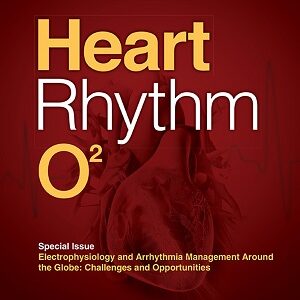Accessing Heart Rhythm O2
Visit the journal website at HeartRhythmOpen.com, where all articles are freely accessible - no subscription or login required.
Submissions to Heart Rhythm O2 are encouraged from all professionals that participate in the care and management of heart rhythm disorders.
Want to be featured? Submit Manuscript
About Heart Rhythm O2
Jeanne E. Poole, MD, FHRS, from the University of Washington, Seattle, is the founding Editor-in-Chief of Heart Rhythm O2. With a focus on cardiac arrhythmias and electrophysiology, Heart Rhythm O2 publishes original clinical and experimental research, design papers, review articles, perspectives in contrast, brief reports, and commentaries. All articles are peer-reviewed.
As a gold open access journal, Heart Rhythm O2 provides a major venue for sharing information on the latest research and technologies for electrophysiologists, physicians, and allied health professionals who care for patients with rhythm disorders from around the world. The first issue of Heart Rhythm O2 published in April 2020. The journal is indexed in PubMed Central, Scopus, and the Emerging Sources Citation Index (Clarivate). The 2023 Impact Factor is 2.5.
Sections of the journal include:
- Original Clinical and Experimental Research
- Design Papers
- Topics in Review
- Perspectives in Contrast
- Brief Reports
- Case Reports
- Research Letters
- Allied Health Professionals Section
- Global Voices
- Fellows Corner
- Editorial Commentaries
- Letters to the Editor
HRO2 Global Voices features interviews and articles from EPs practicing arrhythmia management in diverse global regions.
Global Voices invites papers in areas of arrhythmia research and arrhythmia practices, prioritizing health of vulnerable communities worldwide.
We encourage submissions on: cross border or multi-disciplinary approaches; innovation for global health care; sustainable goals; health equity in vulnerable populations; unique disease states in global regions; and sex, racial/ethnic, and other poorly represented populations.





